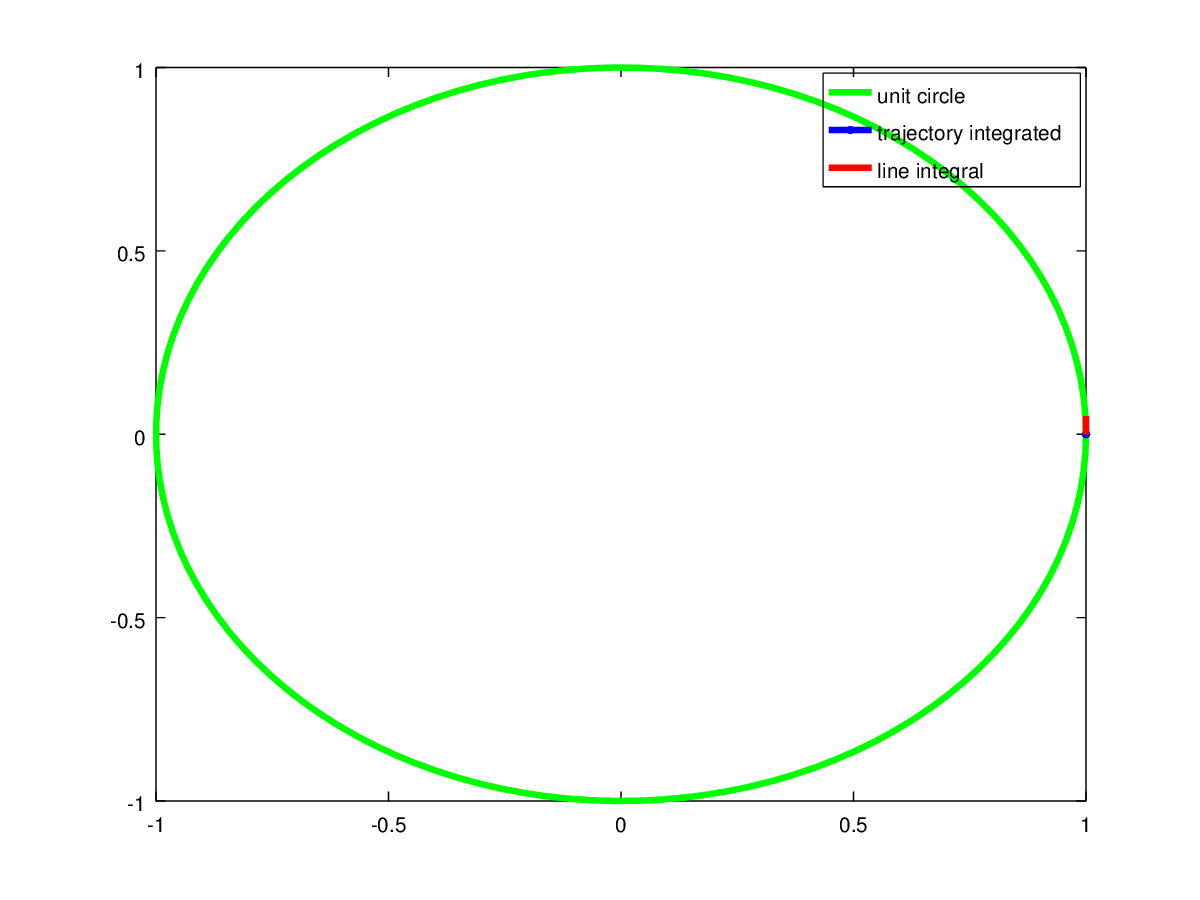Let $\vec(i)$ be a unit vector fixed in a rotating frame of reference. It has a constant magnitude but changes its direction at an angular velocity of $\Omega$.
How can I then derive the following?
- $\frac{d\vec(i)}{dt}=\Omega \vec(j)$
- $\frac{d\vec(j)}{dt}=-\Omega \vec(i)$
I know that the magnitude of $|d\vec(i)|=d\theta=\Omega dt$ via the arc length formula. From here,
$$\frac{d\vec(i)}{dt}=\Omega$$
What am I failing to understand?
Thanks.


Best Answer
Be careful with what you write because
$$\frac{d\vec{i}}{dt}\neq\Omega \; .$$ You can show however that $$\bigg|\frac{d\vec{i}}{dt}\bigg|=\Omega$$ as you suggest using the arclength formula. Now all we need to do is find the direction of $\frac{d\vec i}{dt} \; .$ You could argue geometrically that in the limit of the triangle of sides $\vec i, d\vec i, \text{ and } \vec i + d\vec i$ that $d\vec i$ tends to $\vec j .$ We would then get the correct result you have listed that $\frac{d\vec i}{dt}=\Omega \vec j \; .$
More rigorously we can say that the limit definition of the derivative is that
$$\lim_{dt\rightarrow 0} \frac{\vec{i}(t + \Omega dt) - \vec{i}(t)}{dt}$$
$$\text{thus}$$
$$\lim_{dt\rightarrow 0} \frac{\begin{bmatrix} 1 \\ \Omega dt \end{bmatrix} - \begin{bmatrix} 1 \\ 0 \end{bmatrix}}{dt} = \lim_{dt\rightarrow 0} \begin{bmatrix} 0 \\ \Omega \frac{dt}{dt} \end{bmatrix} = \lim_{dt\rightarrow 0} \begin{bmatrix} 0 \\ \Omega \end{bmatrix} =\Omega \vec j(t) \; .$$
We can now say that $$\frac{d\vec i}{dt}=\Omega \vec j \; .$$
You can adjust these arguments then to say that $$\frac{d\vec j}{dt}=-\Omega \vec i \; .$$